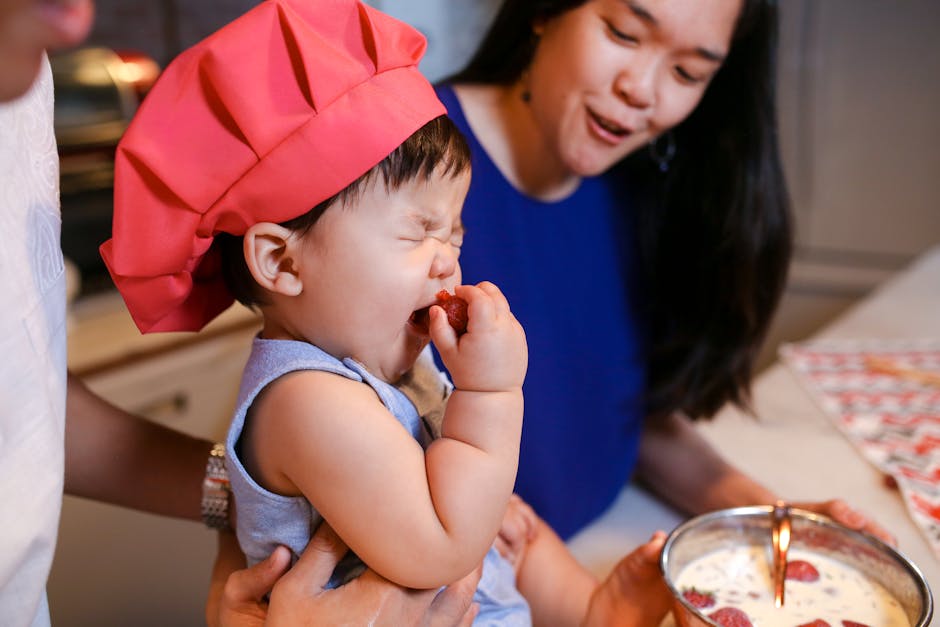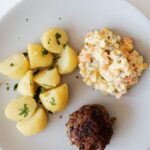-
Table of Contents
“`html
Baby Food Recipes: A Comprehensive Guide
As parents, ensuring that our little ones receive the best nutrition is a top priority. Homemade baby food is not only healthier but also allows you to control the ingredients and flavors your baby is exposed to. This article will explore a variety of baby food recipes, focusing on their origins, preparation methods, and nutritional benefits. Whether you’re a first-time parent or looking to expand your baby’s palate, these recipes will provide a solid foundation for your baby’s dietary journey.
Time
Preparation time: 20 minutes, Cooking time: 30 minutes
Ingredients
Here’s a list of ingredients for a basic vegetable and fruit puree that can be easily customized:
- 1 medium sweet potato (peeled and diced)
- 1 medium carrot (peeled and diced)
- 1 cup of peas (fresh or frozen)
- 1 ripe banana (peeled)
- 1 cup of water or low-sodium vegetable broth
- 1 tablespoon of olive oil (optional)
- 1 teaspoon of cinnamon (optional, for flavor)
Step-by-Step Instructions
Follow these detailed steps to prepare a nutritious baby food puree:
- Prepare the Vegetables: Start by peeling and dicing the sweet potato and carrot into small, uniform pieces to ensure even cooking.
- Cook the Vegetables: In a medium saucepan, add the diced sweet potato, carrot, and peas. Pour in the water or vegetable broth, cover, and bring to a boil. Once boiling, reduce the heat and let it simmer for about 15-20 minutes, or until the vegetables are tender.
- Blend the Mixture: Once the vegetables are cooked, transfer them to a blender or food processor. Add the banana, olive oil, and cinnamon (if using). Blend until smooth, adding more water or broth as needed to reach the desired consistency.
- Cool and Store: Allow the puree to cool before transferring it to airtight containers. You can store it in the refrigerator for up to 3 days or freeze it in ice cube trays for longer storage.
Cooking Tips
Here are some expert tips to enhance your baby food-making experience:
- Texture Matters: Depending on your baby’s age, you may want to adjust the texture of the puree. For younger babies, a smoother consistency is ideal, while older babies may enjoy a chunkier texture.
- Flavor Exploration: Introduce new flavors gradually. Start with single-ingredient purees before combining them to monitor for any allergic reactions.
- Use Fresh Ingredients: Whenever possible, use fresh, organic produce to ensure the best quality and flavor.
- Batch Cooking: Make larger batches and freeze portions to save time on busy days.
Variations
Feel free to customize this recipe based on your baby’s preferences or dietary needs:
- Fruit Variations: Substitute the banana with apples, pears, or avocados for different flavors and textures.
- Vegetable Variations: Try using butternut squash, zucchini, or spinach instead of sweet potatoes and carrots.
- Herbs and Spices: Introduce mild herbs like basil or thyme for added flavor, but be cautious with spices.
Nutrition per Serving
Here’s a detailed breakdown of the nutritional content per serving (approximately 1/2 cup):
- kcal: 80
- fat: 3g
- saturates: 0.5g
- carbs: 15g
- sugars: 4g
- fibre: 3g
- protein: 2g
- salt: 0g
Serving Suggestions
When serving your homemade baby food, consider the following ideas:
- Presentation: Serve the puree in a colorful bowl to make mealtime more appealing for your baby.
- Accompaniments: Pair the puree with soft, whole grain toast or small pieces of soft fruit for older babies who are starting to explore finger foods.
- Beverages: Offer water or diluted fruit juice in a sippy cup to keep your baby hydrated.
Conclusion
Making homemade baby food is a rewarding experience that allows you to provide your child with nutritious, wholesome meals. With simple ingredients and easy-to-follow steps, you can create a variety of delicious purees that cater to your baby’s developing taste buds. Remember to experiment with different flavors and textures, and always keep an eye on your baby’s reactions to new foods. By preparing baby food at home, you not only ensure quality but also foster a love for healthy eating that can last a lifetime. Happy cooking!
“`





